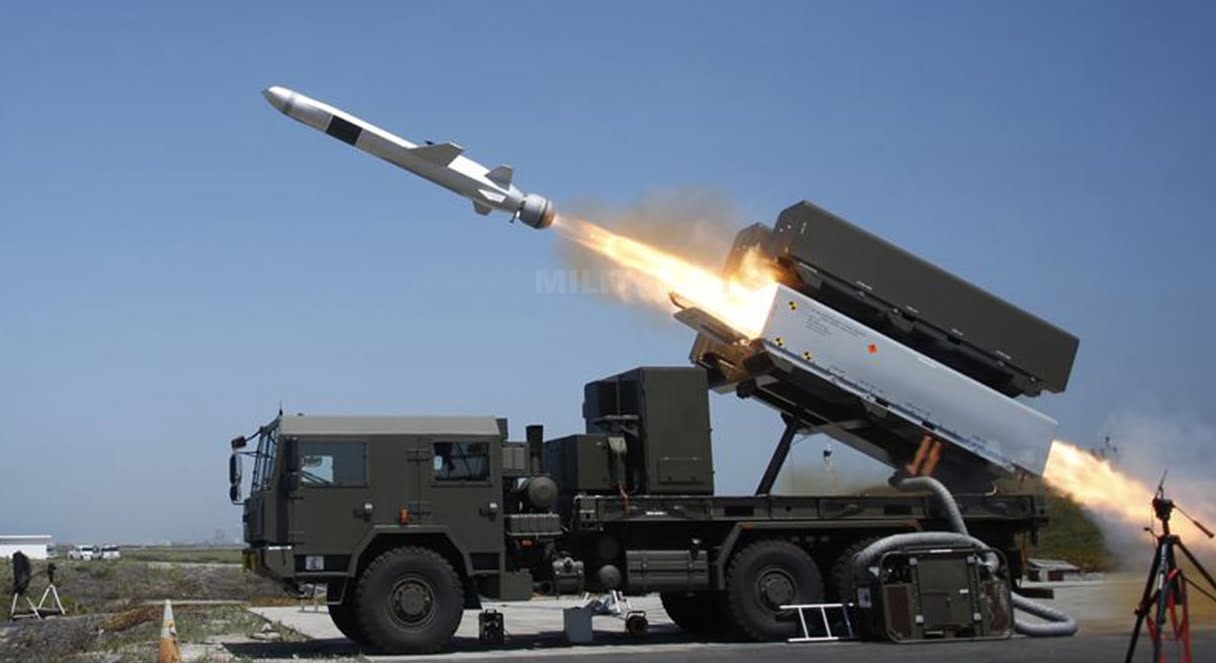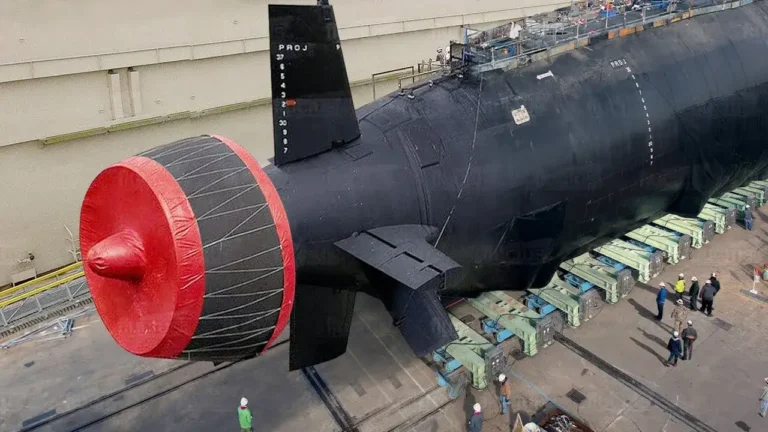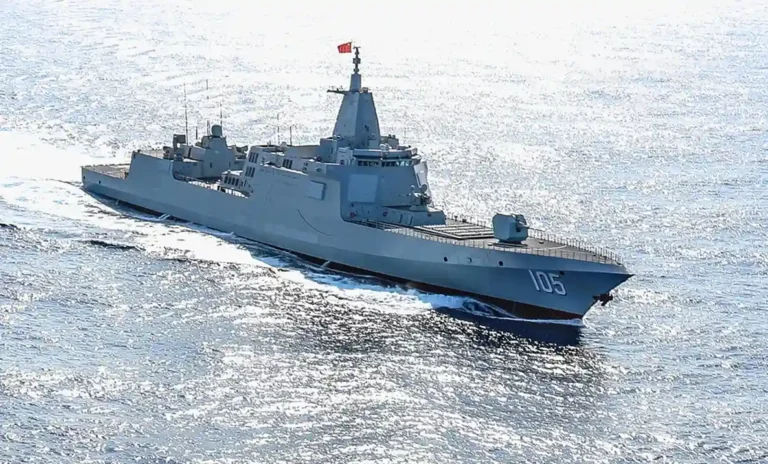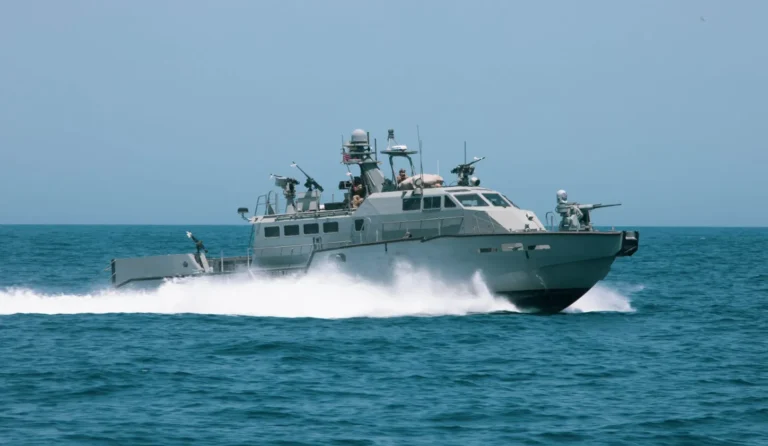Follow Us:
Share
Table of Contents:
Naval Strike Missile from Norway.
Defense Feeds – The modern era of missiles at sea arguably began in October 1967, after the Israeli destroyer Eilat was shockingly struck by a pair of Osa-class guided missile boats while sailing fourteen miles off the coast of Port Said.

And today, the tactical missile with newest designs have been developed. One of them is the Naval Strike Missile from Norway. This Norwegian missile packs a punch and has become the over-the-horizon missile.
The Naval Strike Missile, a Norwegian highly advanced anti-ship missile that the world has taken notice of.
The Naval Strike Missile or NSM is an anti-ship as well as land attack cruise missile manufactured by Kongsberg Defence Systems based in Norway.
The NSM is a successor to the Penguin anti-ship missile, the first NATO anti-shipping missile with an IR seeker, and is the only fifth-generation long-range precision strike missile in the world. It is also well-known as a potent ship-killer. So, how this NSM becomes very popular in the world?
Well, the Naval Strike Missile is called as a potent ship-killer not for no reason. Its distinctive design and capabilities are what make this missile can target ships beyond the horizon.
The NSM has a stealth design which features a somewhat stealthy nosecone, enabling this anti-ship missile to penetrate into shipboard defences. The airframe structure and a high thrust-to-weight ratio fitted into the NSM also expose its cutting-edge design.
With these features, the anti-ship missile can enhance the maneuverability even for overland low flight, making it very effective to be used in coastal and open sea environments.
Moreover, the passive homing missile can travel in sea-skimming mode for its survivability. It is also capable of performing advanced terminal maneuvers in the terminal phase or called high-G maneuvers.
This is done to avoid enemy air defenses and helps to reduce the missile’s radar signature. As a result, rather than attempting to overcome enemy defenses with a fast missile, this NSM is designed to be more difficult to detect—and thus more difficult to shoot down.
With a length of 3.96 m and a weight of 407 kg, the missile can carry a 125 kg High-Explosive blast-fragmentation warhead for a maximum range of more than 185 km.
The warhead is made of titanium and includes a programmable fuze, allowing it to detonate upon contact with an enemy ship or deep within the interior of that ship.
Furthermore, equipped with solid fuel rocket booster, the NSM can be launched into the air and run on JP8 or JP10 fuel. This missile is also powered by Microturbo TRI-40, a single spool turbojet engine consisting of a four-stage axial compressor, annular smokeless combustor and a single-stage turbine.
This engine enables the NSM to be propelled towards its target with high-subsonic speed of 0.7 to 0.9 Mach at a maximum thrust of 2.5 kiloNewton to 3.3 kiloNewton.
Another distinguishing feature of the NSM is its guidance system. This highly maneuverable anti-ship missile employs Global Positioning System/Inertial Navigation System or GPS-aided mid-course guidance with a unique dual-band imaging infrared seeker to detect and discriminate targets.
It is also fitted with in-flight data link and an autonomous target recognition of the seeker to ensure accurate detection and to strike targets with high precision.
With such powerful capabilities, the NSM can be accelerated from a range of platforms against a variety of targets, such as the naval ships and land-based vehicles. For a high-performance ground based Coastal Defence System, the NSM consists of:
- Fire Distribution Center (FDC) to provide Battle Management Command Control Communication Computers and Information (BMC4I)
- Naval Launcher Vehicle (MLV), a weapon platform that protects the canister for the missile
- Sea surveillance and tracking radar
These powerful features are also supported by the missile capability to aim the point selected, meaning it can be programmed to strike a certain part of a certain opponent ship, including the bridge.
Also, through a defined FDC in the advanced BMC4I Distributed Real-Time network, the NSM is able to do multiple simultaneous engagement, such as planning and controlling up to 48 engagements simultaneously against 48 different targets.
Now, looking at its development and testing history, we know that this anti-ship missile was produced to meet the Royal Norwegian Navy (RNON) request for their new frigates and coastal corvettes armaments.
In 1996, Norwegian Defense Logistics Organization and Kongsberg signed the NSM development contract and then in June 2004, the first development test of NSM was successfully conducted. Kongsberg later conducted a test firing of the NSM in July 2006, which enabled the RNON final approval of the development phase.
Following this, in January 2007, Kongsberg and Lockheed Martin signed a joint marketing agreement for an aircraft-version of the NSM, called the Joint Strike Missile or JSM. The JSM would then be incorporated in Lockheed Martin’s F-35 Lightning II Joint Strike Fighter.
After all the agreements concurred, the serial production of the NSM began in June 2007 followed by a test conducted in April 2008 which was unsuccessful due to malfunction of the NSM booster.
Then, on 12 April 2011, the Norwegian Ministry of Defense announced the phase 2 of NSM development before the final milestone was completed in June 2011, when Kongsberg and RNON test-fired the first series of NSM against a sea target at the US Naval Air Warfare Center Weapons Division’s Point Mugu.
Besides that, the missile first test against a land target was also conducted in the same month. Finally, on 10 October 2012, the RNON made history by firing an NSM for the first time and turned it into service ever since.
Currently, the NSM is still in service with the Norwegian Navy, arming the Fridtjolf Nansen–class Aegis frigates and the Skjold fast attack boats.
Due to its excellence, it is also operated by Poland’s Coastal Missile Division, which employs a truck-mounted version for the weapon platform as the installations for their coastal defense.
As previously stated, after Lockheed Martin and Kongsberg entered into a Joint Marketing Agreement to market an air-launched version of this naval strike missile, the JSM missile variant was built upon the NSM and is now carried internally and launched externally from the F-35 Lightning II aircraft.
For your information, the JSM version was specially designed to fit inside the F-35 Joint Strike Missile’s internal weapons bay. Therefore, the turbojet’s air intake was relocated from the missile’s bottom to both sides of the aircraft, while the missile’s fins were also modified.
Thus, these make the JSM compatible with the Mk.41 vertical launch system, which is the standard missile silo for U.S., NATO and other allied naval vessels.
Share
Defense Feeds
Defense Feeds is publication focusing on informing, engaging, and empowering the world by providing accurate information from defense technology.
Powered by Defense Feeds © 2025 – All rights reserved.




